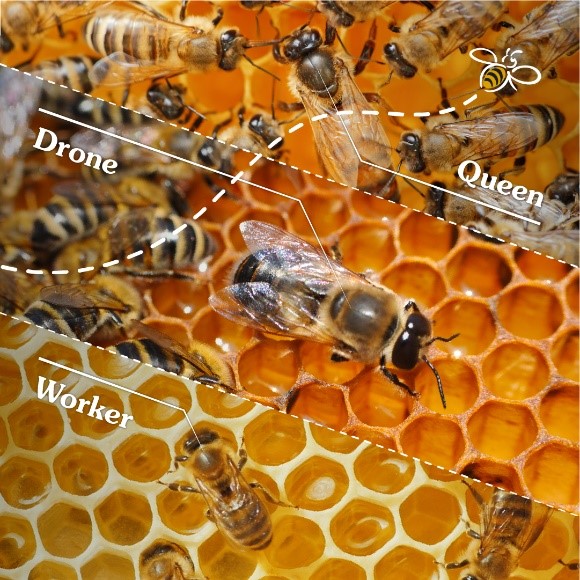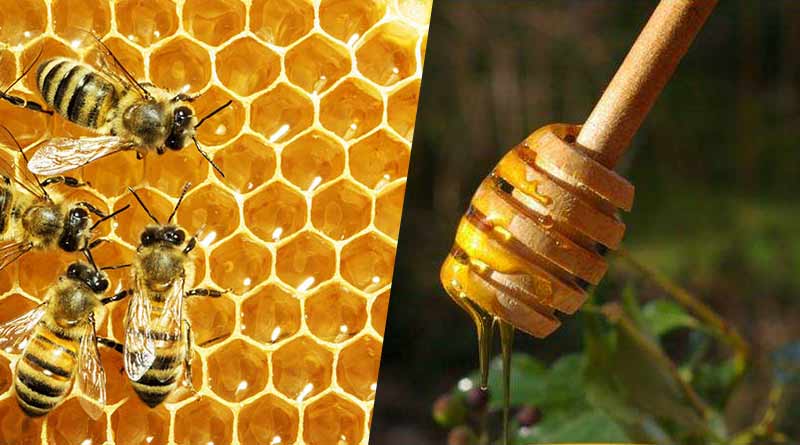Bees aren’t all alike. Some gather pollen for survival, while others, like honey bees, are special creators crafting honey, beeswax, propolis, and royal jelly. In a world of about 7 honey bee species, these little worker bees are the hardworking heroes. They’re the ones turning nectar into honey, making the hive buzz with sweet treasures. Let’s uncover the magic these bees create, exploring how they transform nature’s gifts into the golden goodness we know as honey. Join the journey into the hive, where tiny workers play a big role in crafting something truly extraordinary.
Why Bees Make Honey?

Picture someone storing food for winter, wanting to ensure a healthy diet when fresh options dwindle. That’s bees with honey. It’s not just sweet; it’s packed with energy, vitamins, and sugars. Bees are literally “busy as a bee,” flapping their wings 11,000 times a minute, needing loads of energy. Storing honey guarantees a year-round energy supply.
About the Bee World
Bees are savvy planners. Wild hives set aside honey for years, ready for anything that might interrupt foraging, like a drought or vegetation shortage. A hive could sustain around 60,000 bees for a few years. They’re the ultimate survivalists, ensuring a sweet reserve in case of emergencies.
How Do Bees Make Honey?
1. Foraging for Nectar:
Bees forage within a 5-mile radius, visiting flowers like apple, dandelion, or lavender. They use a proboscis, a long tongue, to sip nectar. The nectar, a sugary liquid from flowers, is stored in their “honey stomach.”
2. Nectar Transformation:
Back at the hive, worker bees receive the nectar. Enzymes break it down into simpler sugars, starting the honey-making process. The honey stomach can hold up to 70 mg of nectar, almost as much as the bee itself.
3. Coordination and Pollination:
Worker bees coordinate foraging by making circles over the hive, establishing their coordinates within a 5-mile radius. They also gather pollen, vital for larvae development. Pollen caught in their hair is processed and stored as a protein source.
4. Passing to a House Bee:
Returning foragers meet “house bees” in the hive. The nectar is transferred to a younger bee who chews it for 30 minutes. This chewing adds enzymes, reducing water content and making digestion easier.
5. Spreading the Syrup:
Once chewed, the syrup is spread over the honeycomb. Bees fan their wings to evaporate water, thickening the honey. The process involves meticulous teamwork.
6. Capping the Honey:
When the honey reaches the right consistency and water content, bees cap it with beeswax, ready for future consumption. Capping involves bees excreting a substance from their abdomen to create beeswax.
Do Bees Prepare for Summer?

Bees forage intensely in spring, gearing up for a summer dearth when growth and pollination decrease. They ensure a stockpile for lean times.
What Bees Need for Honey:
Apart from nectar, bees need water, a hive, pollen, vitamins, carbohydrates, lipids, proteins, and minerals. These elements support hive survival, especially the protein-rich pollen vital for larvae development.
The Make-Up of Honey
Honey doesn’t spoil due to a process called crenation. It’s drained of water, creating a high-sugar concentration. Honey, comprising about 82% carbohydrates, offers a rich source of fructose and glucose. It also contains enzymes, amino acids, and a variety of vitamins and minerals, including B complex, Vitamin C, calcium, iron, and antioxidants.
A Few Fascinating Facts:
- Honey never spoils if kept away from air and water.
- Raw organic honey, with pollen, offers benefits for both bees and humans.
- It takes 2 million flowers to produce 1 pound of honey.
- One honey bee produces about 1/12th of a teaspoon of honey in her lifetime.
- A large colony can consume 100-200 pounds of honey in a year.
The next time a honey bee crosses your path, appreciate the marvel in its lifetime work. From collecting nectar to transforming it into honey, bees exemplify intricate teamwork and resourcefulness. As you savor a spoonful of honey, recognize the immense energy, precision, and natural artistry that goes into creating this golden elixir, a testament to the extraordinary capabilities of one tiny creature—the bee. For more such posts please visit our Health & Fitness section.



